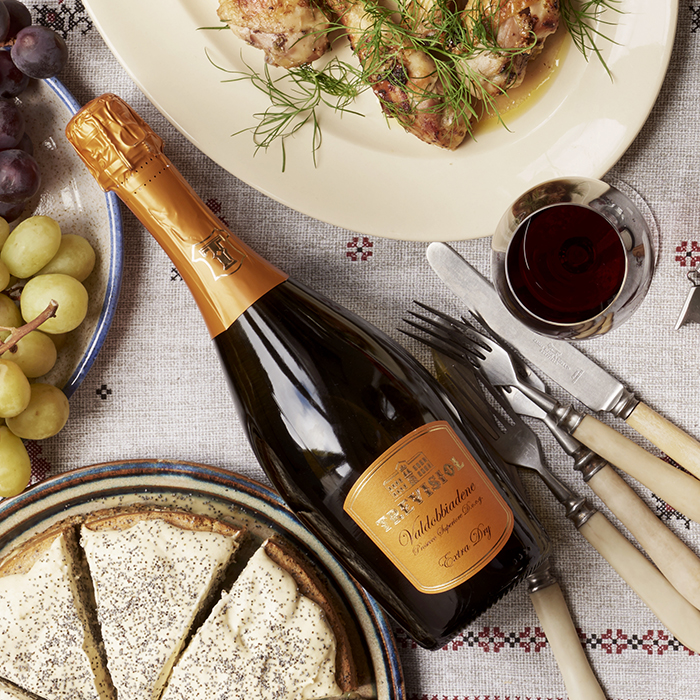Heading for the hills
Author: Davy Żyw

Photograph: Joe Woodhouse
The first reference to “Prosecco” the wine was in 1754, by Italian poet Aureliano Acanti: “And now I would like to wet my mouth with that Prosecco with its apple bouquet”. Almost 300 years on, Prosecco’s apple bouquet is the reason it sells over 400 million bottles a year, almost a quarter of them here in the UK (the wine’s largest export market).
Prosecco is a synonym for the grape, Glera, which has become inextricably associated with the region, as well as the wine. Produced in the Veneto and Friuli-Venezia Giulia, the majority of Glera grapes grow on the pianura – the flat, fertile plains between Venice and Udine, where the climate is generally warm and wet. The hills just to the north are lush and green, with a rolling medley of patchwork vines, hilltop towns and breath-taking Alpine views, broken only by the arrow-like silhouettes of church spires; no wonder this area has just attained UNESCO World Heritage status.
The bubbles here are captured using the tank or Martinotti method, producing a fresh and fruity style, rather than the savoury, complex notes you find in bottle-fermented sparkling, like Champagne. (Read more about how sparkling wine is made here.) Champagne needs a minimum 15 months’ ageing before release, which means all Champagnes on the market are at least two years old before they reach our shelves or, indeed, glasses.
While top-quality examples take longer, Prosecco grapes can be harvested, processed and bottled ready for drinking within 60 days of being picked. This is the main reason that Prosecco is generally a fraction of the cost of Champagne and other bottle-fermented sparkling wines. Its lower price has helped introduce a whole wave of people to the joys of sparkling wine, but it has also caused a flood of industrial, soulless styles. But, a change is coming, as people seek out better wines, with more personality – and, to find these, we head to the hills.
When you drive toward the Alps, the air cools, the soils change, the mountains loom and you will find the styles of Prosecco alter. The beating heart of the area, where the best grapes are grown, is between the towns of Conegliano and Valdobbiadene, a short drive north of Venice. In this undulating landscape, with cooler hills of calcareous and limestone soils, more defined examples are produced. The wines here are lighter, more mineral and have real identity, a vital character often blended away from wines produced on the pianura (the plain).
Because of the additional labour, hand harvesting and longer production methods, these hilltop Proseccos are more expensive than your supermarket trolley-fillers, but are well worth the extra money. Take Trevisiol’s wine: Paolo and his two sons run a winery in the heart of Valdobbiadene, working with 50-year-old vines at 300 to 400 metres above sea-level. The mineral soils offer painfully small yields of intensely flavoured grapes. Small batches of this prised fruit undergo long, slow fermentations, allowing Paolo to blend parcels and create the best possible wine. He proves just how good Prosecco can be – setting the benchmark high. Gleaming and energetic, with a foaming palate of yellow orchard fruit, mineral flashes and the famous apple bouquet, it’s anything but sickly-sweet, anodyne fizz.
As the region permitted to make Prosecco expands, and the market for these wines grows, we’ll see many more bottles appearing on our shelves, but it’s worth seeking out those which offer true quality and value.
Trevisiol’s Prosecco is our Wine of the Week; find out more here.


